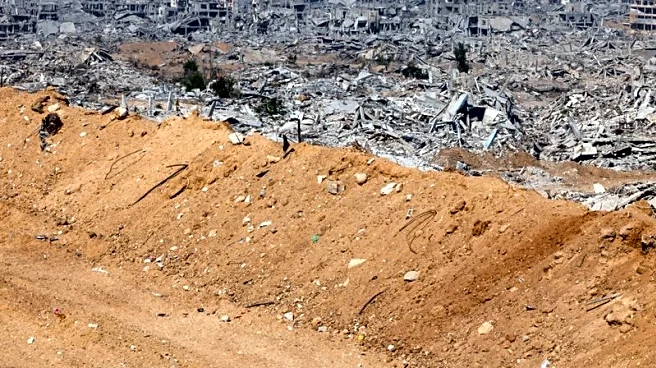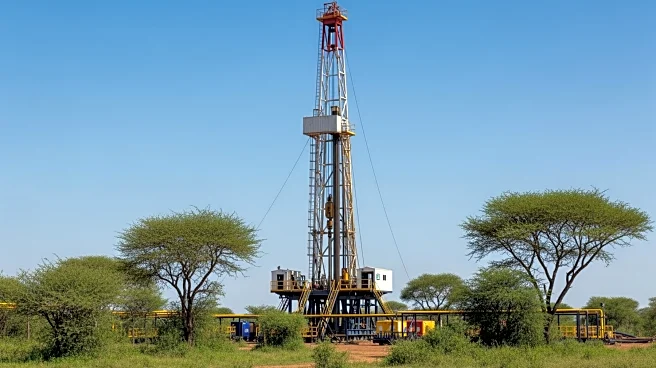What's Happening?
A study evaluates the use of plastic-based walls as an innovative solution for building envelopes in educational buildings located in Egypt's border regions. The research focuses on the performance of recycled
plastic bricks under climate change scenarios, assessing their energy performance, cost-efficiency, and environmental benefits. The bricks are produced using waste streams like PET, PP, and PE, reinforced with polypropylene connectors and organic fibers. The study highlights the advantages of these bricks, including reduced construction time, lower structural mass, and improved thermal performance compared to conventional red bricks.
Why It's Important?
The use of recycled plastic bricks in construction addresses several challenges faced by educational facilities in border areas, such as budget constraints, remote site conditions, and climatic stresses. These bricks offer cost efficiency, reduced environmental impact, and enhanced thermal performance, contributing to sustainable construction practices. By utilizing locally available materials, the approach reduces transportation costs and logistical barriers, aligning with sustainability goals and supporting the transition to energy-efficient building methods.
What's Next?
The study suggests further exploration of hybrid fiber systems and the long-term effects of untreated natural fibers on durability and performance. Future research should focus on optimizing fiber combinations and assessing large-scale implementation for industrial use. The findings indicate potential applications for fiber-reinforced 3DCP in precast elements, architectural facades, and lightweight structural components.
Beyond the Headlines
The integration of recycled plastic bricks into construction practices represents a significant step toward eco-efficient and resilient building methods. This development could lead to long-term shifts in construction practices, promoting sustainability and reducing reliance on traditional, resource-intensive materials.












